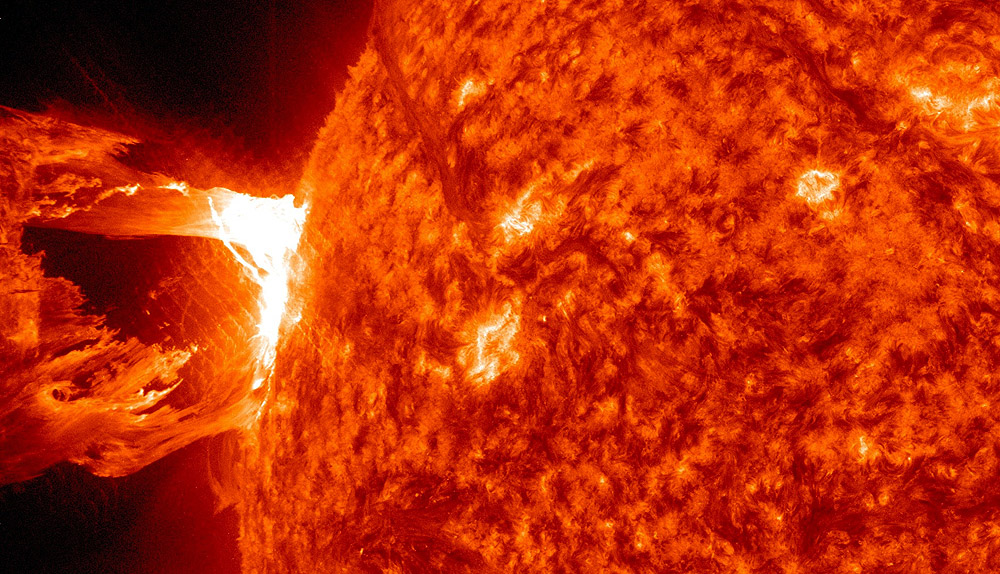Scientists want to understand what causes giant explosions in the sun’s atmosphere, the corona, such as this one. The eruptions are called coronal mass ejections or CMEs and they can travel toward Earth to disrupt human technologies in space. To better understand the forces at work, a team of researchers used NASA data to study a precursor of CMEs called coronal cavities. (Credit: NASA/Solar Dynamics Observatory (SDO))
Home Scientists want to understand what causes giant explosions in the sun’s atmosphere, the corona, such as this one. The eruptions are called coronal mass ejections or CMEs and they can travel toward Earth to disrupt human technologies in space. To better understand the forces at work, a team of researchers used NASA data to study a precursor of CMEs called coronal cavities. (Credit: NASA/Solar Dynamics Observatory (SDO)) Scientists want to understand what causes giant explosions in the sun's atmosphere, the corona, such as this one. The eruptions are called coronal mass ejections or CMEs and they can travel toward Earth to disrupt human technologies in space. To better understand the forces at work, a team of researchers used NASA data to study a precursor of CMEs called coronal cavities. (Credit: NASA/Solar Dynamics Observatory (SDO))
Scientists want to understand what causes giant explosions in the sun’s atmosphere, the corona, such as this one. The eruptions are called coronal mass ejections or CMEs and they can travel toward Earth to disrupt human technologies in space. To better understand the forces at work, a team of researchers used NASA data to study a precursor of CMEs called coronal cavities. (Credit: NASA/Solar Dynamics Observatory (SDO))



